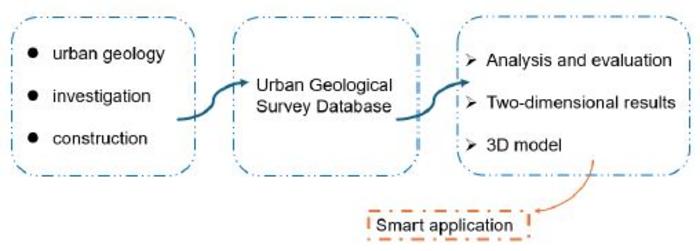On September 1 this year, Japan will observe the 64th Disaster Prevention Day, commemorating the Great Kanto Earthquake which occurred on September 1, 1923. This earthquake, which struck the Kanto region, including the capital Tokyo, caused widespread destruction and claimed the lives of more than 140,000 people. It was a pivotal moment in Japan’s history, prompting the nation to prioritize disaster preparedness. These efforts have resulted in Japan becoming the world leader in disaster preparedness, early warning systems, and earthquake-resilient structures.

Credit: Shinya Inazumi from SIT, Japan
On September 1 this year, Japan will observe the 64th Disaster Prevention Day, commemorating the Great Kanto Earthquake which occurred on September 1, 1923. This earthquake, which struck the Kanto region, including the capital Tokyo, caused widespread destruction and claimed the lives of more than 140,000 people. It was a pivotal moment in Japan’s history, prompting the nation to prioritize disaster preparedness. These efforts have resulted in Japan becoming the world leader in disaster preparedness, early warning systems, and earthquake-resilient structures.
Buildings on these efforts, Professor Shinya Inazumi and Ph.D. student Yuxin Cong from the Graduate School of Engineering and Science, both at Shibaura Institute of Technology, have developed a system to address risks caused by liquefaction and subsidence, two soil deformation events triggered by earthquakes that cause buildings to tilt and sink. In a study published in the journal Smart Cities on 6 May 2024, they introduce a predictive model that maps the distribution of soil-bearing layers. The model can identify regions suitable for construction, mitigating the risk of structural failure during earthquakes.
“In the broader context of smart cities, the implications of this study are many. Using advanced predictive models, urban planners and engineers can more accurately assess the suitability of sites for development and optimize the design and placement of buildings, infrastructure, and public utilities,” explains Prof. Inazumi.
Predicting which regions are vulnerable to these effects is challenging as it is impractical to evaluate soil conditions at every location. To address this, researchers developed a model to predict soil bearing strength and the thickness of bearing layers using geotechnical data from 433 sites in Setagaya, Tokyo. This data was obtained using the Standard Penetration Test and the Mini-Ram Sounding Test, two methods widely used in Japan to assess soil density and foundation requirements.
Using this data, researchers applied the kriging method, a well-known statistical technique, to make predictions of soil-bearing layer thickness and depth based on geographic coordinates such as latitude and longitude. This produced a three-dimensional map showing the distribution of bearing layers at different locations in Setagaya, Tokyo. To further improve prediction accuracy, they used the bagging technique, an ensemble learning method, which combines predictions from multiple models to produce a more accurate result. For this method, they included geographical data such as latitude, longitude, and elevation along with the geotechnical data to improve the predictive capabilities of the model.
The bearing strength and thickness of soil layers are indicators of the soil’s ability to support buildings and other heavy structures. A generated map of soil-bearing properties can help city planners ensure structures are built on stable foundations, minimizing the risk of failure during soil deformation events. Additionally, the model can be integrated with real-time data from sensors that monitor parameters such as moisture and ground movement. This allows city planners and engineers to continuously monitor changes in soil conditions and identify potential risks, such as soil instability, which could compromise safety.
Such a system advances disaster risk reduction efforts and contributes to Goal 11 of the UN’s Sustainable Development Goals, which seeks to make cities and human settlements more inclusive, safe, resilient, and sustainable. Its implementation is particularly vital in planning resilient cities, especially in earthquake-prone regions like Japan.
“This study is useful for real-time analysis of existing data, for the government to make new urban plans, for construction companies to conduct risk assessments before doing their jobs, and for individuals to obtain real-time geographic data and hazard warnings through mobile phones and other means in the future,” concludes Prof. Inazumi.
***
Reference
Title of original paper: Integration of Smart City Technologies with Advanced Predictive Analytics for Geotechnical Investigations
Journal: Smart Cities
About Shibaura Institute of Technology (SIT), Japan
Shibaura Institute of Technology (SIT) is a private university with campuses in Tokyo and Saitama. Since the establishment of its predecessor, Tokyo Higher School of Industry and Commerce, in 1927, it has maintained “learning through practice” as its philosophy in the education of engineers. SIT was the only private science and engineering university selected for the Top Global University Project sponsored by the Ministry of Education, Culture, Sports, Science and Technology and had received support from the ministry for 10 years starting from the 2014 academic year. Its motto, “Nurturing engineers who learn from society and contribute to society,” reflects its mission of fostering scientists and engineers who can contribute to the sustainable growth of the world by exposing their over 9,500 students to culturally diverse environments, where they learn to cope, collaborate, and relate with fellow students from around the world.
About Professor Shinya Inazumi from SIT, Japan
Shinya Inazumi is a Professor at the Department of Civil Engineering at Shibaura Institute of Technology. With over 105 published articles, his research spans various fields, including data management, shallow foundations, landfill engineering, contaminant transport, remediation technology, material reuse, and geosynthetics for containment. He leads the Geotechnical Engineering Laboratory at Shibaura Institute of Technology, dedicated to developing sustainable environments using simulation, data science, and AI. He can be reached at inazumi@shibaura-it.ac.jp.
Funding Information
This research received no external funding.
Journal
Smart Cities
Method of Research
Computational simulation/modeling
Subject of Research
Not applicable
Article Title
Integration of Smart City Technologies with Advanced Predictive Analytics for Geotechnical Investigations
Article Publication Date
6-May-2024
COI Statement
The authors declare no conflicts of interest



